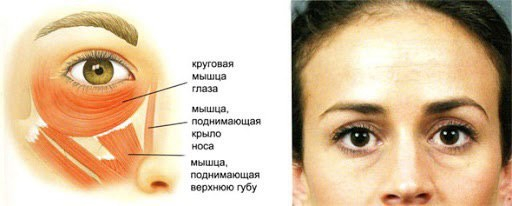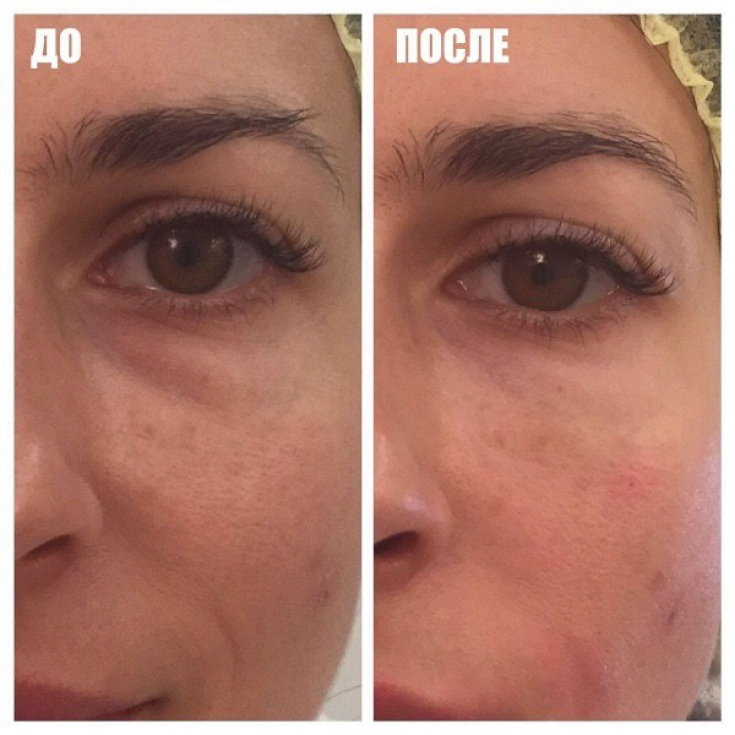Modern aesthetic trends are more and more focused on the improvement of the eye area, especially the infraorbital region is the primary goal for the esthetician. One of the early signs of periorbital aging is dark circles under the eyes, loss of volume in the nasolacrimal sulcus, and the appearance of paint bags. At the moment, there are many approaches to the correction of this area. In the article on estet-portal.com you will learn about the technique of filling the nasolacrimal trough and the features of work in this area.
- Assessment of changes in the nasolacrimal trough
- Preferred technique for filling the nasolacrimal trough
- Complications in the correction of the nasolacrimal trough
- Conclusions
Assessment of changes in the nasolacrimal trough
Evaluation of changes in the nasolacrimal sulcus is a subjective phenomenon for both doctors and patients. There have been attempts to create an objective assessment, for example, Hirmand in 2010 created a classification system based on clinical assessment:
- In class I patients, the volume loss is medially limited to the fossa. These patients may also have slight flattening extending to the central cheek.
- Class II patients have volume loss in the lateral orbital region in addition to the medial orbit, there may also be a mild volume deficit in the medial cheek and flattening of the upper cheek.
- Class III patients with complete circumferential depression along the orbital margin, from medial to lateral.
Read also: Nasal trough: anatomy.

Adequate anatomical understanding and assessment of the aging process allows treatment to be tailored as needed. An example would be the need to increase the volume of the infraorbital ring or cheek in older patients to improve overall results.
Unlike other volume deficits on the face, the nasolacrimal trough is a technically more difficult area due to the complex anatomy and interactions with numerous structures of the face.
Fillers with hyaluronic acid (HA) are the most common in the world. They are regarded as a safe, non-invasive and reversible treatment that has been gaining popularity in recent years. HA fillers may be used as the sole treatment option or as an adjunct to surgery. Their main disadvantage is that they are not permanent, however, longer lasting fillers overcome this barrier.
Selection of patients is paramount. The quality of the skin and the depth of the void should be considered when evaluating the patient. "Ideal Patient" has good skin tone, minimal flaccidity, and mild to moderate furrow depth.
Caution should be exercised in patients with large fat pads as improvement is minimal and some patients complain of "puffiness"; after treatment.
Care should also be taken with patients who have excess skin in the lower eyelid.
Those with excess skin laxity and fatty herniation will benefit more from surgery than from injections.
See also: Fillers for the correction of the nasolacrimal trough.
Injection technique varies between specialists. Direct injections into the area with a 30-gauge needle into the depths of the dermis were previously very common, completing the procedure with a gentle massage of the area. Care must be taken when massaging so as not to shift the filler into the cheek, which will actually exacerbate the defect rather than eliminate it. There is a higher risk of bruising with direct injections, making the canal technique the method of choice.
Preferred technique for filling the nasolacrimal sulcus
The skin of the lower eyelid is very delicate. Therefore, direct injections should be avoided if possible. With a white eyeliner, outline the upper edge of the cheek when the patient is sitting upright and looking up (emphasizing the defect in the middle). Looking up, outward outlines the deficit laterally on the opposite side. Actual use local anesthetics (approximately 0.3 ml of lidocaine) on the zygomatic bone prior to injection. Infraorbital blockade so can be used, but it is preferable to do without it, since the infraorbital blockade can distort the anatomy.
Read also: Why paint bags appear.

A needle (23-25G depending on skin thickness) is used to create a small tunnel before the cannula (25G 50mm) is inserted. This technique is preferable due to its atraumatic nature. The cannula passes medially to the deepest point, the filler is injected deep into the dermis and muscles at several levels, then the cannula is gently withdrawn retrograde. Broken filler lines are used to provide a more graduated appearance and to avoid noticeable ridges. It is recommended to avoid injections of large volumes in order to provide a more graduated appearance from the medial to lateral border. At the end, a gentle massage is performed.
After the procedure, patients receive a 10-minute pack and are advised to avoid alcohol for 48 hours, and to sleep with an extra pillow at night for for several nights.
Complications in nasolacrimal sulcus correction
Several complications should be discussed before starting treatment in order to obtain appropriate consent. Ecchymosis is a discoloration of the skin caused by bleeding under it, mainly ecchymosis is prevented using the channel technique. Pain and erythema are often limited, but with a single insertion point, the severity of these complications is greatly reduced. Irregularities may occur, which should be massaged at the time of injection or at follow-up a few weeks later. If the lumps do not dissolve, they can be dissolved with 10 units of hyaluronidase in a certain area. BLOCKCODE Slight swelling may occur due to the hydrophilic nature of the filler and will often subside after two to three weeks.
Finally, it is necessary to take photos before and after the procedure, as most patients feel no change after a few weeks, because they get used to their new appearance.
Conclusions
Periorbital rejuvenation can have a significant impact on patients' lives and appearance. Patient selection is key to achieving optimal results. Understanding the local anatomy and the dynamic aging process allows for the correct choice of treatment as well as the placement of the filler, which optimizes the outcome and minimizes possible side effects.







Add a comment